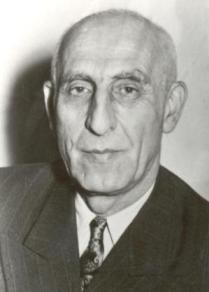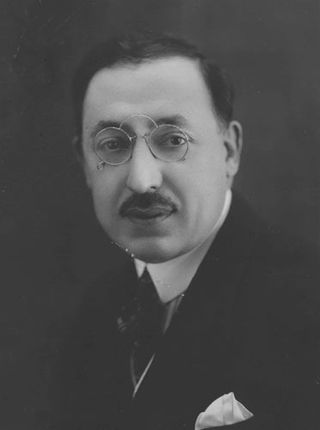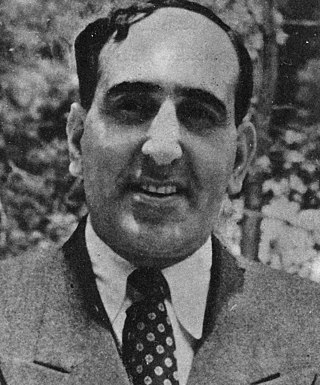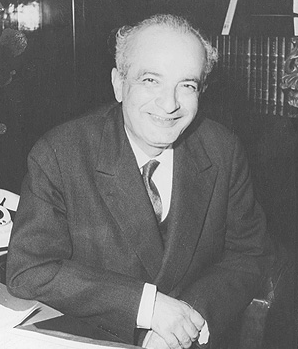| | |||||||||||||||||||
| |||||||||||||||||||
79 seats to the National Consultative Assembly | |||||||||||||||||||
|---|---|---|---|---|---|---|---|---|---|---|---|---|---|---|---|---|---|---|---|
| |||||||||||||||||||
| |||||||||||||||||||
Parliamentary elections were held in Iran in 1952 to elect the 17th Iranian Majlis.
| | |||||||||||||||||||
| |||||||||||||||||||
79 seats to the National Consultative Assembly | |||||||||||||||||||
|---|---|---|---|---|---|---|---|---|---|---|---|---|---|---|---|---|---|---|---|
| |||||||||||||||||||
| |||||||||||||||||||
Parliamentary elections were held in Iran in 1952 to elect the 17th Iranian Majlis.
The elections were held by Government of Mosaddegh, who championed free elections and tried to minimize fraud by changing several governor-generals and governors. He also ordered members of the electoral supervisory councils to be selected by lot. However, the government was unable to control the shah, Artesh , the notables, and some of its own supporters. [1] The voting process was stopped by Prime Minister Mohammad Mosaddegh after enough MPs were elected to form a parliamentary quorum (79 out of 136). [2] The decision is viewed as manipulation, because Mosaddegh meant to prevent opposition candidates taking seats from rural areas. [3] Richard Cottam describes the elections as "relatively free". [4]
The highly organized Tudeh Party failed to win a single seat, despite receiving the second-highest number of votes. [5]
In Tehran, the turnout was double that of previous election and the National Front candidates, including members of Iran Party, Toilers Party, Muslim Mojahedin and non-partisan nationalists won all twelve seats. [6] In Tabriz, the nine deputies elected were supporters of Mossadegh. [7]
According to David McDowall, in Mahabad the candidate known to be a Democratic Party of Iranian Kurdistan member was overwhelmingly elected but the results were annulled. [8] However, Denise Natali states that the candidate was named Vaziri, who belonged to Tudeh Party. [9] Royalist cleric Hassan Emami eventually took office representing the constituency and was elected as Speaker of the parliament. [10] A CIA document states that the Shah was behind his election. [11]
| Party/alliance | Seats | ||
|---|---|---|---|
| Royalists | 49 | ||
| Pro-British | |||
| National Front | Iran Party | 30 | |
| Toilers Party | |||
| Muslim Warriors | |||
| Vacant | 57 | ||
| Total | 136 | ||
| Source: Abrahamian [6] | |||
Historian Ervand Abrahamian, in an interview with Democracy Now! , said U.S. State Department documents declassified in 2017 reveal that their strategy was to undermine Mohammad Mosaddegh through parliament and the U.S. Central Intelligence Agency (CIA) spent lot of money to get their 18 favorable candidates elected. [12]

Mohammad Mosaddegh was an Iranian politician, author, and lawyer who served as the 35th Prime Minister of Iran from 1951 to 1953, after appointment by the 16th Majlis. He was a member of the Iranian parliament from 1923, and served through a contentious 1952 election into the 17th Iranian Majlis, until his government was overthrown in the 1953 Iranian coup d'état aided by the intelligence agencies of the United Kingdom (MI6) and the United States (CIA), led by Kermit Roosevelt Jr. His National Front was suppressed from the 1954 election.
The Tudeh Party of Iran is an Iranian communist party. Formed in 1941, with Soleiman Mirza Eskandari as its head, it had considerable influence in its early years and played an important role during Mohammad Mosaddegh's campaign to nationalize the Anglo-Persian Oil Company and his term as prime minister. The crackdown that followed the 1953 coup against Mosaddegh is said to have "destroyed" the party, although a remnant persisted. The party still exists but has remained much weaker as a result of its banning in Iran and mass arrests by the Islamic Republic in 1982, as well as the executions of political prisoners in 1988.

Liberalism in Iran or Iranian liberalism is a political ideology that traces its beginnings to the 20th century.


Parliamentary elections were held in Iran in 1947. The newly elected parliament was opened on 17 July. The election was a three-way power struggle between Ahmad Qavam, Mohammad Reza Shah and pro-Britain conservative politicians.
The Comrades Party or the Compatriots Party was a left-wing Iranian political party active during the 1940s.

Parliamentary elections were held in Iran in 1950.
The elections for the 14th Parliament of Iran was held in November 1943–February 1944 and more than 800 candidates ran for 136 seats.
Toilers Party of the Iranian Nation was a social-democratic political party in Iran.
Iranian Democrat Party or Democrat Party of Iran was a short-lived political party in Iran, founded in 1946 and led by Ahmad Qavam. It was the most important party formed by the old Qajar nobility, and an association of aristocrats and anti-British radical intellectuals. With the fall of Qavam, it disintegrated in 1948.
The Party of the National Will or National Will Party, formerly named Vatan Party and Halqa Party, was an Anglophile political party in Iran, led by Zia'eddin Tabatabaee. The party played an important role in anti-communist activities, specifically against Tudeh Party of Iran, and was rival to other leftists and civic nationalists who later emerged as the National Front.

The Iran Party is a socialist and nationalist party in Iran, founded in 1941. It is described as the "backbone of the National Front", the leading umbrella organization of Iranian nationalists established in 1949. The party's total membership has never exceeded the several hundred figure.

Abdullah Moazami was an Iranian lawyer and politician. He taught at University of Tehran and was a member of Parliament of Iran for four consecutive terms from 1944 to 1953. Moazami came from an upper-class and titled landlord family and has been described as a "man of moderate demeanor and connected with several factions by both family and politics".

Socialism in Iran or Iranian socialism is a political ideology that traces its beginnings to the 20th century and encompasses various political parties in the country. Iran experienced a short Third World Socialism period at the zenith of the Tudeh Party after the abdication of Reza Shah and his replacement by his son, Mohammad Reza Pahlavi. After failing to reach power, this form of third world socialism was replaced by Mosaddegh's populist, non-aligned Iranian nationalism of the National Front party as the main anti-monarchy force in Iran, reaching power (1949–1953), and it remained with that strength even in opposition until the rise of Islamism and the Iranian Revolution. The Tudehs have moved towards basic socialist communism since then.

Sayyid Hassan Emami was an Iranian Shia cleric and royalist politician. He worked as a judge in the Ministry of Justice and taught law at the University of Tehran.

Noureddin Alamouti (1901–1965) was an Iranian judge and politician. He served as the justice minister under the cabinet of Ali Amini, during which he was noted for forming a powerful anti-corruption division that led to "the last serious attempt to realize the rule of law" in Pahlavi dynasty.
The Tudeh fraction was the parliamentary group of the Tudeh Party in the Iranian Parliament.

Seyyed Abolhasan Haerizadeh was an Iranian judge and politician. He was a member of Parliament of Iran for three consecutive terms between 1921 and 1928 and another four consecutive terms from 1947 to 1956.

Seyyed Ahmad Razavi was an Iranian engineer and politician.
Nasser Zolfaghari was an Iranian politician.
The Seventeenth Majles convened in February 1952. Of the seventy-nine deputies, thirty either belonged to or closely identified with the National Front. They included Sanjabi and Zirakzadeh of the Iran party; Baqai of the Toilers' party; Kashani and Qonatabadi from the Society of Muslim Warriors; nonparty supporters of Mossadeq, such as Shayegan, Razavi, Nariman, Makki, and Haerzadeh; and Khosrow and Naser Qashqayi, who joined the caucus after their elections from Fars... The other forty-nine deputies, many of them landowners, divided into a royalist and a pro-British fraksiun. Not daring to confront public opinion directly, the royalists and pro-British conservatives tried to weaken the government with side skirmishes.
In the 1952 elections, for instance, KDPI candidates received about 80 percent of the votes in the Kurdish regions, vet they were prohibited from attaining seats in the Majlis. Kurdayeti certainly remained salient for Kurdish nationalist cadres. Although Vaziri was director of Tudeh's KAK, he ran as the "Kurdish candidate" from Mahabad in 1952 in his bid for a seat in Majlis.